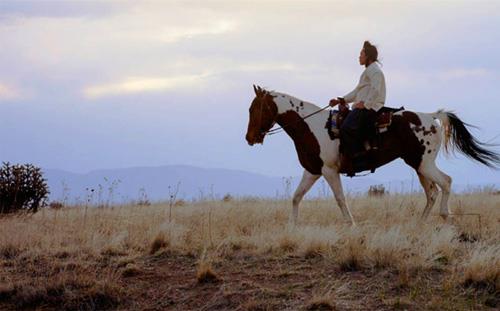
About the only thing that's ever been completely clear about the Battle of the Little Bighorn is the outcome.
U.S. Army General George Custer and 267 soldiers in his battalion of the Seventh Cavalry – that is, his entire battalion – were killed.
This made the battle, fought on June 25 and 26, 1876, a major victory for the Lakota, Northern Cheyenne, and Arapaho tribes that Custer and the Seventh Cavalry had been expecting to defeat handily.
What's been less clear through nearly a century and a half of mythologizing is the backstory and fuller context of what has been colloquially known, not inaccurately, as Custer's Last Stand.
Battle of Little Bighorn, a documentary that premieres Monday at 8 p.m. ET on Smithsonian, uses historical documents, academic experts, and re-enactment footage to paint a fuller picture.
What the hour primarily ends up doing, not surprisingly, is to reiterate how appallingly the expansion-minded government of the United States treated Native Americans, the people who had been living for centuries on this land that the U.S. government had now suddenly begun to covet.
The U.S. mistreatment of Native Americans is hardly a news flash. Battle of Little Bighorn simply provides more evidence and a lot of specific details about the rapid chain of events that dispossessed Native Americans of their land, their freedom, and much of their culture.
Custer himself was not an accidental or incidental party. A Civil War hero, he had political ambitions, considerable vanity, and therefore a relentless drive to burnish his image with further military glory, which now meant helping to open the West for settlers and adventurers.
This meant driving the many Native tribes off that land, using a simple, government-approved tactic. Native Americans were required to withdraw to designated reservations. Those who refused, even those who had been granted their current land by treaty, were identified as "hostiles" and became fair game for enforcers like Custer and the Seventh Cavalry.
In 1868, Battle notes, the U.S. government had signed a treaty giving the Black Hills of South Dakota, considered largely worthless, to the Lakota. As part of that same process, Custer had agreed that he would not make war on Native Americans again.
Both those deals lasted only as long as it was convenient for the U.S. government. The rumors of a gold strike in the Dakotas in 1874 led to the construction of instant towns like Deadwood, and to military incursions to ensure that Native Americans weren't still trying to hold turf the United States had now decided it wanted.
Might didn't make right, but it did ease the path to conquest. The U.S. military had such superior weaponry and numbers that, in the end, the dozens of Native American tribes stood no chance.
Little Bighorn, which Native Americans call the Battle of Greasy Grass, was an aberration, a failure of intelligence combined with hubris.
Battle notes that the showdown also had numerous secondary implications, the first being a firestorm of specious newspaper reports that made Custer a fallen hero and Native Americans a pack of immoral savages who, now more than ever, had to be controlled or eliminated.
One famous entrepreneur, Buffalo Bill Cody, put together a traveling show that re-created the battle, reinforcing the image of an heroic Custer against crazed renegades.
Sensationalized reports often featured illustrations of Native Americans that have continued to define that visual image right through the present.
Battle also notes, almost parenthetically, that the Lakota tribe has never accepted its forcible ouster from the Black Hills land it was given in the treaty of 1868.
While the U.S. government has offered compensation in excess of a billion dollars, the Lakota have never taken that settlement. They have gone to court, demanding the land be returned as per the terms of the settlement. The case went as far as the U.S. Supreme Court and the Lakota won. But that was 40 years ago, and the stalemated negotiations continue today.
As portrayed in Battle of Little Bighorn, that famous encounter was a military outlier that had enormous consequences for public opinion and, therefore, national policy toward Native Americans.
Tragic as the battle was, this documentary suggests, the greater historic tragedy lay in the forces that brought George Custer to his last stand.